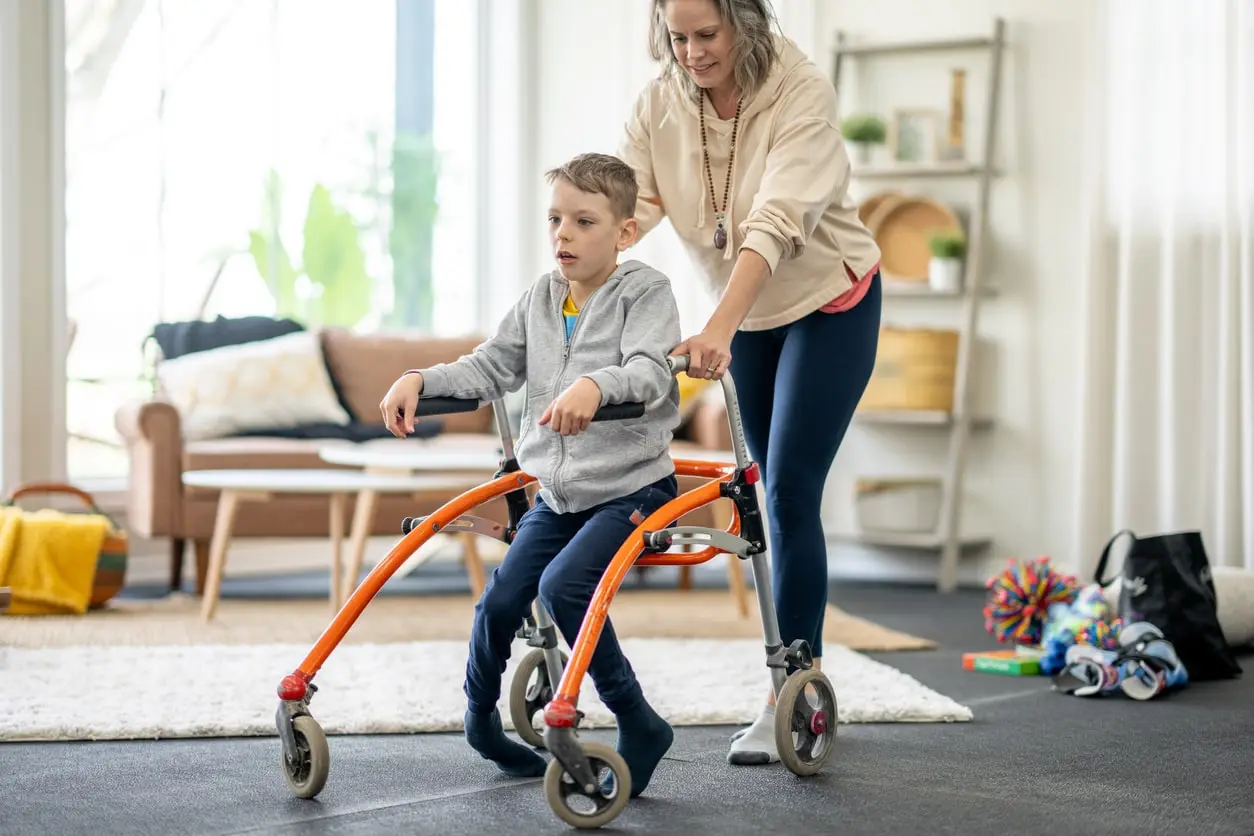NDIS Assistive Technology
Assistive technology comes in a vast range of different shapes and sizes and colours. From power wheelchairs to communication boards to screen reading software, there is an assistive technology to assist you in just about every area of your life. From education and employment to transport and navigating the world around you, the right assistive technology with the right supports at the right time can be a life changer.
According to Dr Kate Anderson, who Inform spoke with in series two of the Inform podcast, assistive technology acts as a bridge between you and your environment.
‘Assistive technology sits in the bridge. It’s not fixing people’s impairment. And it’s also not changing the environment. It’s just providing a bridge between those two areas so that people can access perhaps an inaccessible environment,’ Dr Anderson said.
NDIS and assistive technology
The list of available AT is long with hundreds of different products. In an effort to simplify the process of accessing AT via your NDIS plan, the NDIA split AT into four different levels.
Level 1 – Basic Assistive Technology
Basic AT is safe to operate or use and you won’t need specialised assistance to set it up. Basic AT items cost less than $1500. In addition, you don’t need an assessment for this type of AT. And you can buy it online or from a local shop. Examples include non-slip bathmats, adapted grip equipment or mobility canes.
Level 2 – Standard Assistive Technology
You can generally buy Standard AT from an AT supplier. Standard AT is not customised, however you’ll probably need some assistance setting it up and making adjustments. For example, altering the height. An AT Assessment will sometimes be required for Standard AT. Some examples of Standard AT include transfer benches, laundry and washing line adaptations and handrails.
Level 3 – Specialised Assistive Technology
While Specialised AT is similar to Standard in that you can buy from an AT Supplier, Specialised AT often requires some adjustments or modifications to suit the individual. Specialised AT will require an AT Assessment and a written quote. Examples include electronic Braille displays, stair lifts and pressure mattresses.
Level 4 – Complex Assistive Technology
Complex assistive technology is custom made. It often requires ongoing support including training. This kind of AT requires an AT Assessment and a written quote. Examples includes power wheelchairs, bed rails and hearing aids.
Assistive technology assessments: The why and how
While most Basic and Standard AT will not require an AT Assessment, anything Specialised, or Complex will. The AT Assessment will help you determine what your needs are and what is the most appropriate AT for you. AT Assessors may be an allied health professional, a registered dietician or psychologist or AT Mentor.
How to buy assistive technology
The way your NDIS plan is managed will determine how you purchase assistive technology. For example, if you are self-managed, you can choose your own AT suppliers and you are responsible for paying any invoices and then claiming from the NDIS.
However, if the NDIA manages your plan, your Local Area Coordinator or Support Coordinator will assist you to find a registered NDIS provider and the NDIS will pay the provider directly. And if your plan is managed for you, your plan manager will assist you to find the right AT and AT provider and they will pay them on your behalf.
Tips and advice:
- An AT Assessment prior to your planning meeting can help ensure the NDIA has enough evidence to decide what AT is reasonable and necessary.
- AT valued at more than $1500 will require two quotes
- Don’t forget about repairs and maintenance. And remember that you can include these in your plan
- Consider setting up a trial to test if new assistive technology is the best fit for you before you buy.
Learn more about NDIS assistive technology funding
Independence Australia’s guide explains NDIS Assistive Technology funding, selection processes, and the role of Occupational Therapists in choosing appropriate equipment.
This article provides an in-depth guide on leveraging NDIS Assistive Technology funding. It illustrates the essentiality of Assistive Technology and Occupational Therapists, and elucidates NDIS equipment categorization, funding mechanics, and need for professional assessment. It also explains procedures for equipment replacement and selection of suppliers.

How to optimise your NDIS assistive technology funding
